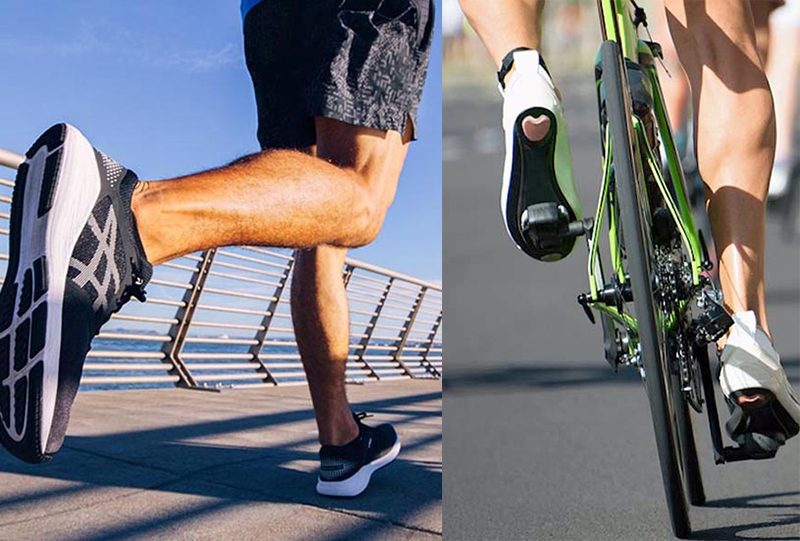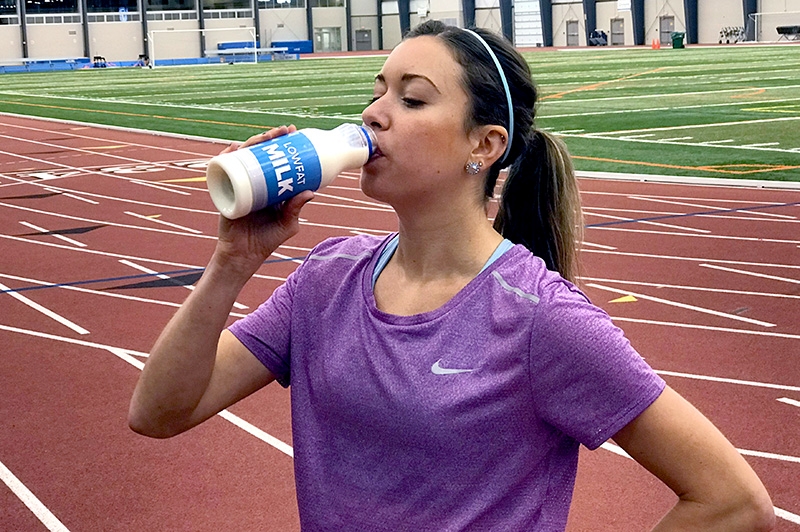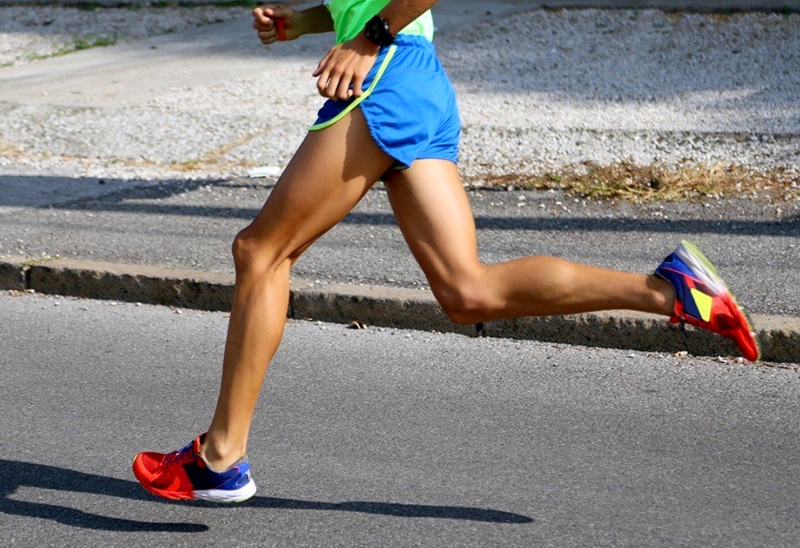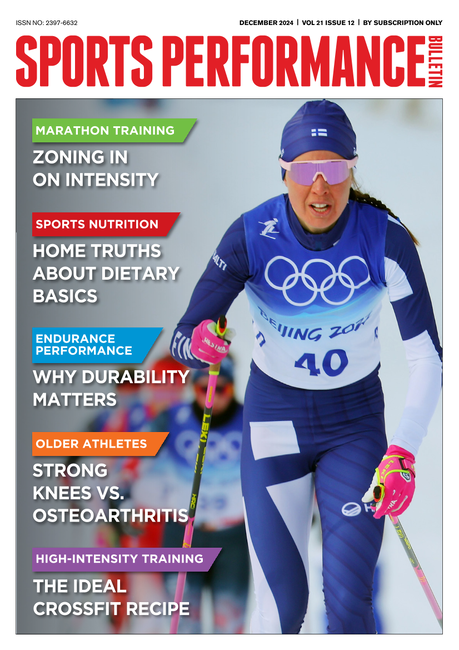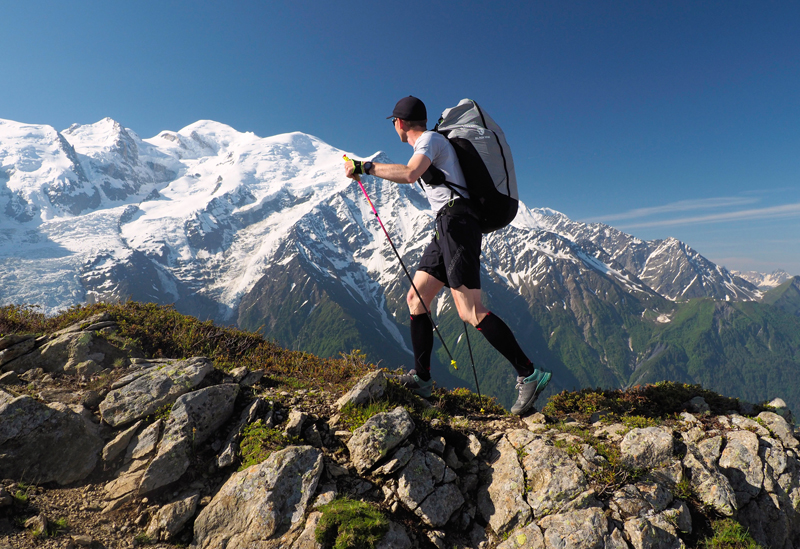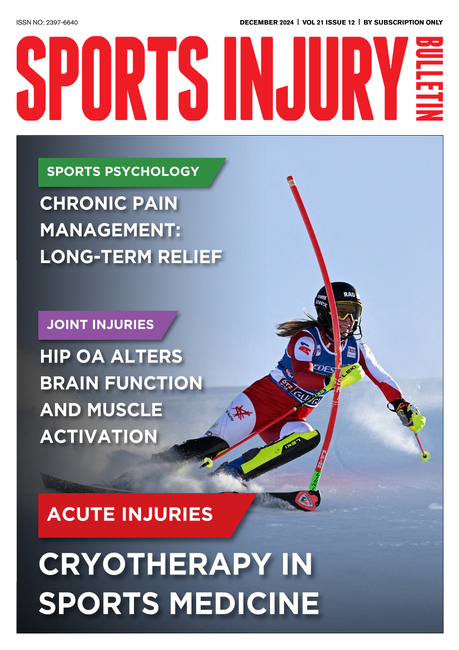You are viewing 1 of your 1 free articles. For unlimited access take a risk-free trial
Good vibrations: should cyclists and swimmers shake it all about?
Andrew Hamilton investigates whether whole body vibration training can improve bone health in low-impact sports such as swimming and cycling
Andrew Hamilton investigates whether whole body vibration training can improve bone health in low-impact sports such as swimming and cycling
Low-impact sports such as swimming and cycling are fantastic for cardiovascular health, maintaining a healthy body weight and building muscular strength. Even better, the smooth spinning action of pedaling and the low-gravity environment of the water means that they are also gentle on joints, tendons and ligaments, which means even the most injury-prone sportsmen and women can train hard and long into older age without the aches, pains and potential injury risks posed by other sports such as running.
The downside of low impact training
Despite these numerous health benefits however, there’s a downside to this ‘gentle’ aspect of cycling and swimming because recent research suggests training when a training programme consists of only smooth and impact-free movements, the main bones in the body are not subjected to much stress and loading. Why does this matter? Well, regular loading of the bones in our body is critical for maintaining bone health – in particular, bone mineral density (BMD). Building high levels of BMD and keeping them high is important and very desirable as low levels of BMD are associated with serious health consequences in later life (see panel 1).
Panel 1: Importance of bone density
Why are high levels of BMD important? In very simple terms, this is because low levels of BMD are associated with an increased risk of osteoporosis. Osteoporosis is a disease that affects mainly (but not exclusively) older people in which bones gradually become more fragile and likely to break. These broken bones are also known as fractures and typically occur typically in the hip, spine, and wrist.
Osteoporosis (which quite literally means ’porous bones’) is often known as the ‘silent crippler’ because it often progresses painlessly and unnoticed, until a bone actually breaks. Although any bone can be affected, fractures of the hip and spine are particularly problematical because they can produce a number of long-term complications including loss of ability to walk and permanent disability, loss of height and severe back pain. Although the precise mechanisms are poorly understood, the hallmark of osteoporosis is a reduction in skeletal mass caused by an imbalance between bone breakdown (resorption) and bone formation. This results in reduced bone mineral density (BMD).
In recent years, solid evidence has accumulated that cyclists who clock up long hours in the saddle(1), and swimmers (especially female swimmers) who train long and hard on the pool(2). are likely to have lower levels of BMD than even couch potatoes, increasing the risk of fracture and also that of osteoporosis in later life. One potential solution for low-impact athletes such as cyclists and swimmers is to engage in regular impact or weight-bearing activities such as running or weight training, which has been shown to help increase BMD when added to an existing endurance-only programme(3). But while this strategy is undoubtedly effective, the downside is time and logistics; adding in extra sessions of another sport or heading to the gym is not always possible for those with already busy lifestyles. There’s also the issue of ensuring that any additional training complements rather than hinders an existing programme.
Shaking things up
In recent years, scientists have looked at alternative methods of increasing BMD – ie other than weight training or high-impact exercise. One option that has come under the spotlight is the use of ‘vibration training’, more accurately known as whole body vibration training (WBVT). WBVT uses high-frequency mechanical stimuli generated by a vibrating platform (for example ‘Power Plate’ – see figure 1) and transmitted through the body. These platforms vary in the type of vibration produced (vertical or side-alternating) and the magnitude of the vibration and frequencies available (although the most common frequencies are in the 30-50Hz range).
Figure 1: Power Plate vibrating platform

The theory is that by standing on the vibrating platform, vibrations can be efficiently transmitted to the large bones in the body. By mimicking bone loading from ground impacts, these vibrations should be able to stimulate bone mass accumulation and improve BMD in those who cannot or do not engage in high-impact exercise. Another claimed benefit is time; due to the large number of vibrations (over 1,800 per minute), WBVT could be a very efficient method of promoting bone health, needing far less time commitment than other modes of exercise. But does this approach stand up to scientific scrutiny?
In one study by South African scientists, researchers looked at the effects of ten weeks of whole body vibration training (using vibration platforms as found in many gyms) on the bone density of well-trained road cyclists(4). Fifteen road cyclists were split into two groups:
- Eight cyclists undertook 15 minutes of intermittent whole body vibration at 30Hz, three times per week while continuing with their normal cycling training.
- The remaining seven simply continued with their normal cycling training for the 10-week period without vibration training (the control group).
In addition, the two groups of cyclists were age, body mass and height matched with 15 sedentary subjects for a further comparison. All 30 subjects then underwent regional dual X-ray absorptiometry (DEXA) scans to determine bone mass and BMD levels.
Vibration gains?
Both the cycling groups had lower pelvic bone mineral density than the sedentary participants with no other differences observed (highlighting the fact that cyclists who just cycle typically have poorer bone density as a result). However, after ten weeks of training, the vibration-trained cyclists showed a significant increase in their hip bone mineral density (a gain of 1.65%) while the control cyclists showed no such gain. Indeed, by the end of the 10-week study period, the control group had a significantly lower spine bone mineral density compared to the start whereas this loss was NOT observed in the vibration-trained group.
Despite the positive results in this study however, other (and more recent) studies have been less clear about the BMD benefits of vibration training. In a 2017 study, researchers investigated the effects of a 6-month period of WBVT on BMD measures in 40 adolescent swimmers(5) As in the cyclist study above, the swimmers were split into two groups, with one adding in 15 minutes of WBVT three times a week. Before and after the six months of training, the BMDs of all the swimmers were measured. The results showed however that adding in WBVT produced no benefits for BMD whatsoever.
The verdict on WBVT and BMD
Given the conflicting results, the obvious question to ask is whether WBVT is a worthwhile BMD-building strategy for athletes seeking optimum bone health? When it comes specifically to athletes, there’s unfortunately very little other research in the literature. However, a comprehensive review study (a scientific study that pools together findings from a number of other previously conducted studies) published last year makes for informative reading(6). This study summarised the findings from 17 other studies on a range of different populations. It concluded that while WBVT seems to help children and adolescents with compromised bone mass to increase BMD, these improvements are limited in postmenopausal women, and there is no evidence of a benefit for healthy young adults. These findings are in line with another (earlier) review study, which found WBVT produced significant but small improvements in BMD in postmenopausal women and children and adolescents, but not in young adults(7).
Implications for athletes
The evidence to date is that WBVT is far from a universal panacea for bone health in athletes whose sports are low-impact in nature. While the cycling study is encouraging, the sample size was quite small (making it difficult to draw firm conclusions) and the results were not replicated in the swimmers. One explanation is that while WBVT provides some benefits when BMD is already compromised, the stimulus it generates is not large enough to produce significant gains in people whose BMDs are in the more normal range.
In terms of maximising bone health in cyclists and swimmers then, it seems that making time for some resistance training or high-impact activity might still be your best bet – ie there are no real shortcuts. Don’t forget too that your day-to-day nutrition habits are also extremely important for building and maintaining BMD; indeed, some recent evidence suggests that not consuming enough calories and calcium while engaging in a strenuous cycling programme may be a fundamental factor in reduced BMD(8). With that in mind, swimmers and cyclists who are keen to maximise bone health are directed to the ‘essential reading’ articles below!
References
- Ned Tijdschr Geneeskd. 2018 Jul 20;162. pii: D2867
- J Bone Metab. 2016 Aug;23(3):149-55
- J Strength Cond Res. 2018 Jun;32(6):1594-1600
- Int J Sports Med. 2012; 33(8):593-9
- Arch Osteoporos. 2017 Dec;12(1):69
- Biomed Res Int. 2018 Nov 4;2018:5178284
- Osteoporos Int. 2010 Dec;21(12):1969-80
- Am J Sports Med 2015;43:1494–504
Newsletter Sign Up
Testimonials
Dr. Alexandra Fandetti-Robin, Back & Body Chiropractic
Elspeth Cowell MSCh DpodM SRCh HCPC reg
William Hunter, Nuffield Health
Newsletter Sign Up
Coaches Testimonials
Dr. Alexandra Fandetti-Robin, Back & Body Chiropractic
Elspeth Cowell MSCh DpodM SRCh HCPC reg
William Hunter, Nuffield Health
Keep up with latest sports science research and apply it to maximize performance
Today you have the chance to join a group of athletes, and sports coaches/trainers who all have something special in common...
They use the latest research to improve performance for themselves and their clients - both athletes and sports teams - with help from global specialists in the fields of sports science, sports medicine and sports psychology.
They do this by reading Sports Performance Bulletin, an easy-to-digest but serious-minded journal dedicated to high performance sports. SPB offers a wealth of information and insight into the latest research, in an easily-accessible and understood format, along with a wealth of practical recommendations.
*includes 3 coaching manuals
Get Inspired
All the latest techniques and approaches
Sports Performance Bulletin helps dedicated endurance athletes improve their performance. Sense-checking the latest sports science research, and sourcing evidence and case studies to support findings, Sports Performance Bulletin turns proven insights into easily digestible practical advice. Supporting athletes, coaches and professionals who wish to ensure their guidance and programmes are kept right up to date and based on credible science.
